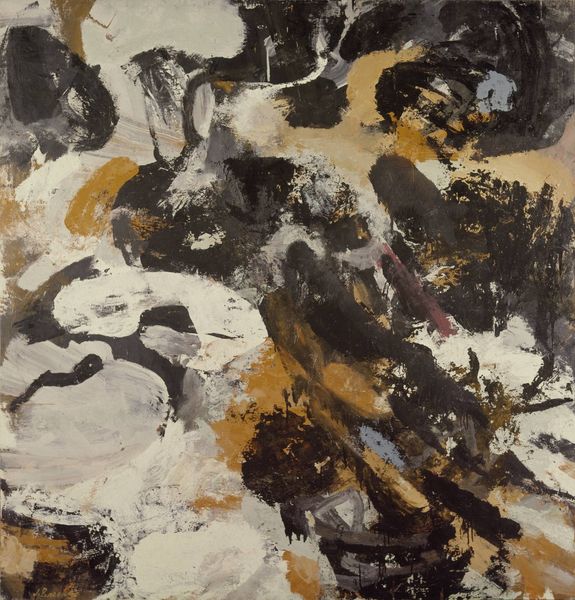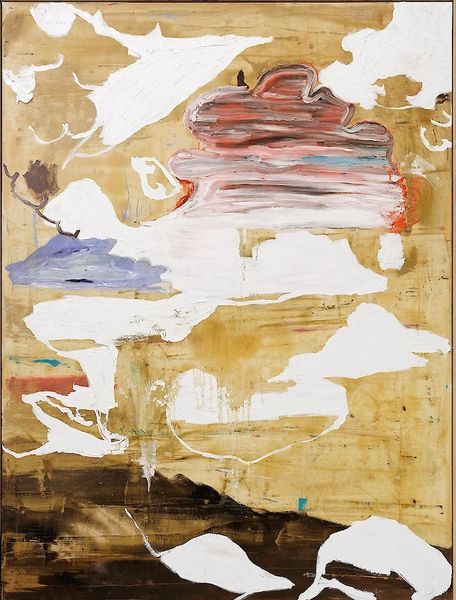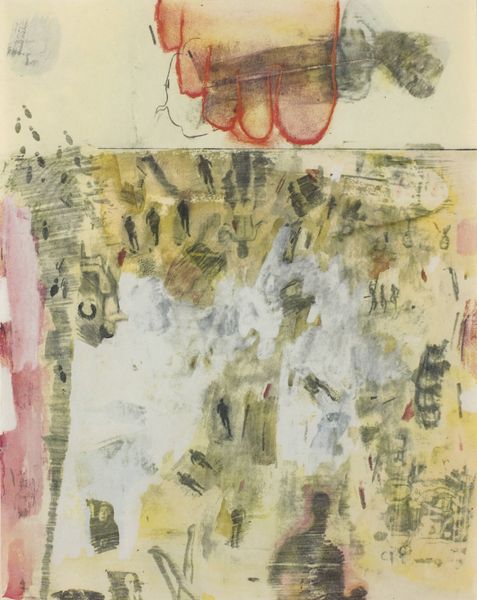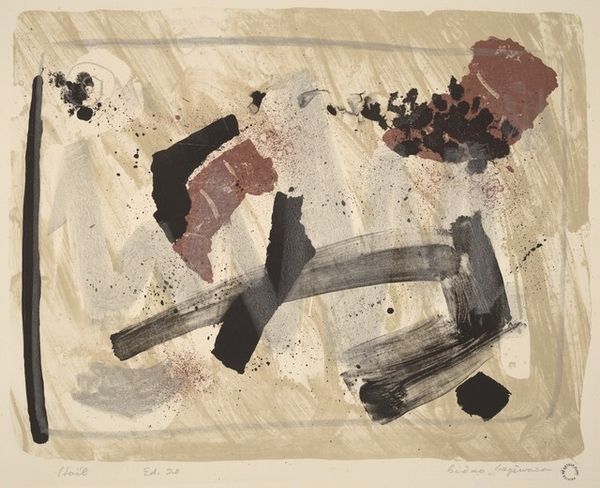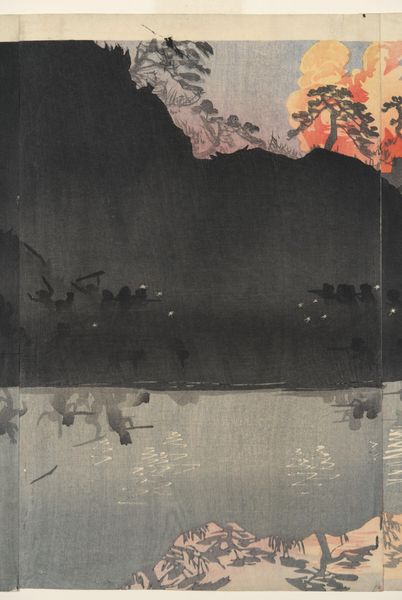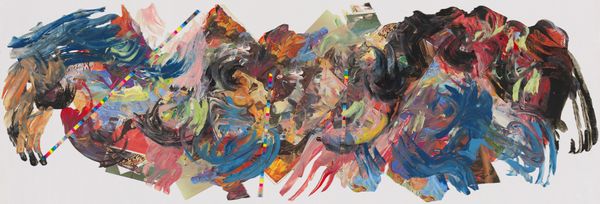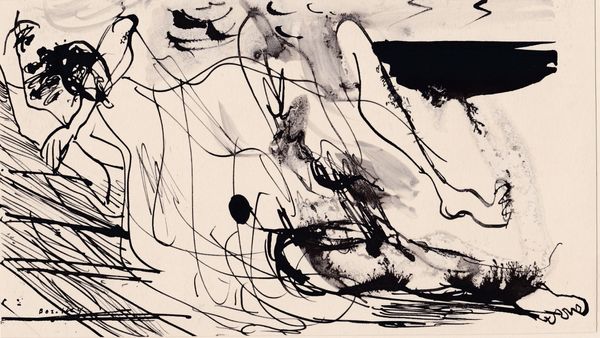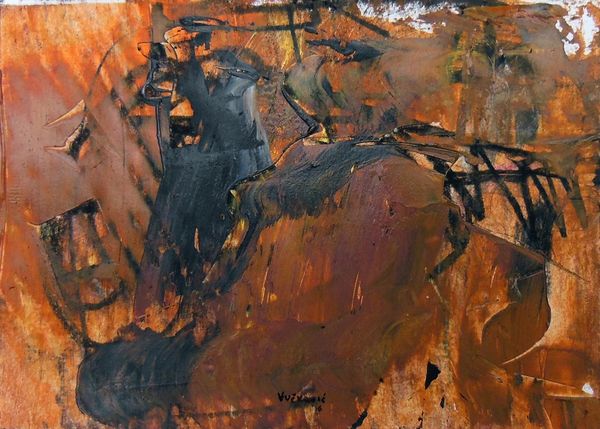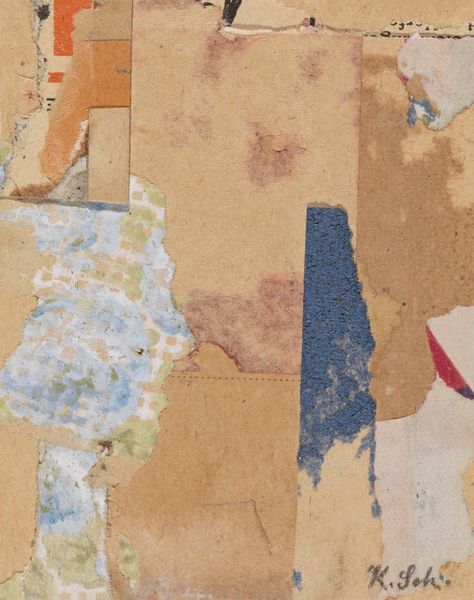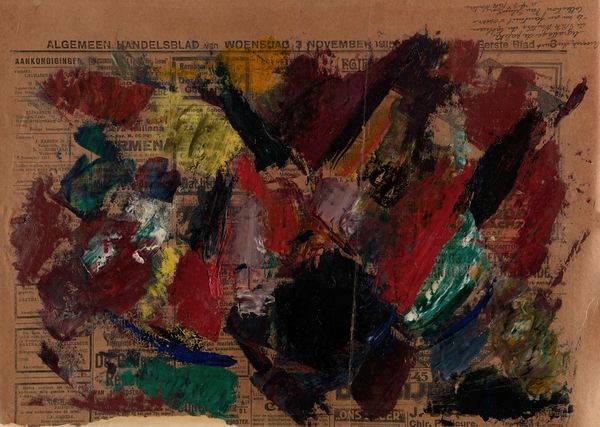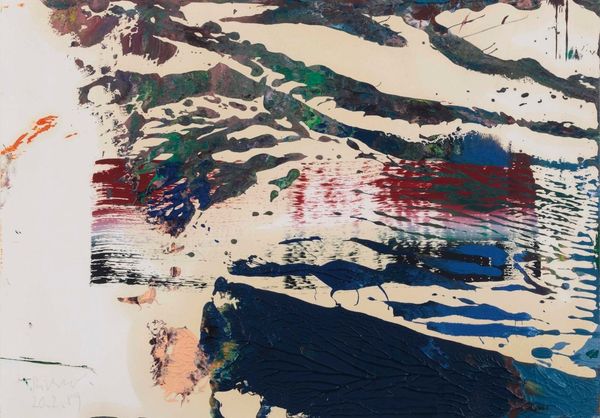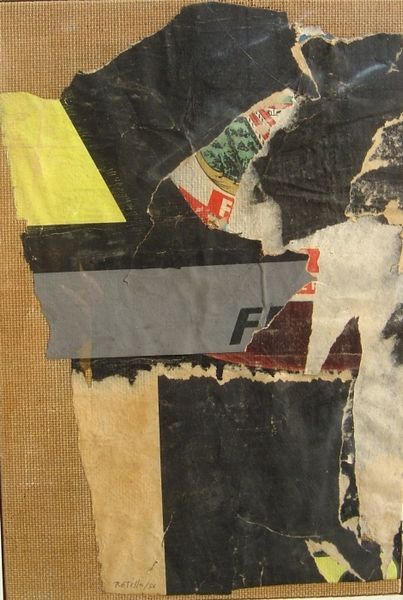
Copyright: Eugene Brands,Fair Use
Curator: This piece, titled L'Orient, was created in 1965 by Eugene Brands, using mixed media, including collage and paint. What strikes you upon seeing it? Editor: I find it immediately disquieting, yet intriguing. There's a fragmented quality – almost like peering through broken memories, wouldn’t you say? The sepia tones lend a feeling of nostalgia and history. Curator: Absolutely. The collage elements invite us to think about cultural appropriation and representation, especially given the title, L’Orient, which itself carries a weighty history. The "Orient," a term loaded with Western perspectives, immediately positions the viewer in relation to the work. Editor: And the symbolism! Note the young child's face near the bottom – seemingly cut from a photograph. There's such innocence and vulnerability in the direct gaze, anchoring the piece and hinting at a broader narrative of identity and otherness. What do you think? Curator: Precisely! And consider the placement of the Japanese newspaper fragments throughout. It’s hard not to view these elements as political commentary on cultural imperialism and the objectification of the East. I read it as Brands’ critique of power dynamics inherent in the Western gaze. Editor: It could also represent something less direct, perhaps his impressions from the media, or lived experience within a colonial framework that has created that bias and affected all the art produced in the frame, no? I am mostly reacting to the geometry formed by torn elements...they produce depth. Curator: True. His abstract style offers layers of interpretations, which I suspect might be on purpose. Do you believe these geometrical juxtapositions of distinct cultural objects can offer the observer space for their interpretation? Editor: Indisputably, abstraction demands engagement, yet here engagement comes fraught with layers of political meaning because of the loaded terms "collage" and "Orient." There is continuity from symbols of one period into other visual symbols. Curator: L’Orient serves as an important visual record of complex cultural relationships as well as his individual commentary. Editor: It does so with great compositional power, and by inviting conversations across cultures by juxtaposing images and geometrical gestures.
Comments
No comments
Be the first to comment and join the conversation on the ultimate creative platform.
